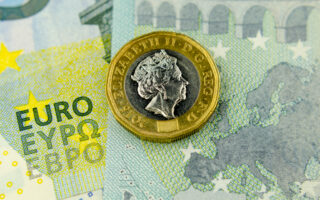How to Cut Energy Bills in Your French Home

Many of us enjoy a 21st century lifestyle and the comfort of heat and light at the flick of a switch.
Of course we take such everyday things for granted, and whilst we’re not all ‘eco-warriors’ it’s a fair bet that the majority of us take more than a passing interest in the monthly utility and heating bills.
Just think about this; your PC is probably consuming around 300 watts of energy per hour as you read this article – oh, and by the way, is that television set still on standby or turned off?
The purpose of this article is to try and provide some advice as to how we can reduce our energy dependence through the use of renewable energy products and by adopting a few new ideas – some of which will cost you nothing.
Fundamentals
We imagine you’ve heard it before – but no apologies for repeating these simple things you can do today.
Turn off lights that are not needed (and I sincerely hope my wife is reading this!).
Turn off the TV, PC, Mobile phone charger, and anything else that’s not doing anything right now, and put the PC on standby during the day when it’s not in use.
Unless you’re already conscientiously doing these things, that will probably save you around €1 a day – or if you prefer €365 a year.
Water, Water Everywhere…
Our water in France is just about the most expensive in Europe!
It costs around 2 centimes for the energy required to produce 100 litres of tap water – doesn’t sound like much does it?
However, when you consider that domestic water consumption in France is around 8 billion litres every year, it means the water companies are spending millions of euros per annum just to give us clean tap water in our homes.
Anything we can do to reduce the amount of water we consume will help.
Do turn off the taps when you’re brushing your teeth – and do you really need to flush every time?
In fact, even better, install a small pump (solar powered preferred) to fill your toilet cistern from a water butt.
Reduce, re-use, recycle – in that order.
Are you taking the plastic bags that you got at the supermarket back and re-using them?
Are you re-using envelopes, cards and bits of paper?
Are you printing out your emails, and if you must, are you putting the paper back through the printer for re-use?
What are you doing with your household food scraps?
How about a nice compost heap or wormery?
Are you still taking the car when you could walk, cycle, pogo…
I could go on but you get the picture. And there are almost certainly other things you could do – you just need to look for them.
Saving Money by Spending Money – Insulation, Insulation, Insulation
Approximately 62% of our consumed energy is for lighting and heating.
The VERY BEST way you can reduce your heating bills is by fitting good insulation.
There are many different types of insulation available now, so the good old itch inducing yellow fibreglass many may remember is not the only option.
The type of insulation need not have a big carbon footprint either – Sheep’s wool insulation is an eco-friendly alternative that performs very well, check out www.secondnatureuk.com for further information.
For those constructing, it is very possible to build a wall to function as a thermal store – the details of which are too lengthy to expand upon here but which you can check out online.
[mrb]
Energy Saving Products for All – for ‘free’
Until recently, the following products have generally only available to the commercial market.
However, ever-increasing energy costs have encouraged the manufacturers to make them available to the domestic market.
The even better news is that these are easily retro-fitted to an existing household to save energy and money.
These are simple to apply and install (despite the technical jargon).
The products fall into two main categories: Electric, and Gas, Oil or LPG Central heating controllers.
Electric Energy Savers
These units operates on a similar principal to the concept of ‘high energy rating’ and convert the whole electrical circuit to a ‘high energy rating’ circuit – therefore reducing the amount of wasted electricity.
They actively monitor and improve the power factor of household appliances thus reducing the wasted electricity and therefore your bills.
For the technically minded;
Power factor affects every operation with a 3-phase AC electrical supply to some degree or other. Quite simply, power factor is a measure of how efficiently electrical power is consumed. The ideal power factor is unity, or one.
Anything below one (or 100% efficiency), means that extra power is required to achieve the actual task at hand.
This extra power is known as reactive power, which unfortunately is necessary to provide a magnetising effect required by motors and other inductive loads to perform their desired functions. However, reactive rower can also be interpreted as watt-less, magnetising or wasted power and an extra burden on the electricity supply.
Power factor correction is the term given to a technology that aims to restore power factor to as close to unity as is economically viable. This is normally achieved by the addition of a capacitive circuit to the electrical network, which compensates for the Reactive Power demand of the inductive load, and thus reduces the burden on the supply.
Benefits of power factor Correction:
• Power consumption reduced
• Extra kVA availability from the existing supply
• Electricity bills reduced
• Transformer & distribution equipment I2R losses reduced
• Electrical energy efficiency improved
• Minimised voltage drop in long cables
Gas, Oil and LPG Savers
These are digital, intelligent central heating boiler management system controllers.
They are compatible with most small boilers including combi, condensing and back boilers using natural gas, oil or LPG.
And again, for the technically minded;
These oil and gas systems are advanced, micro-processor based boiler management and warm air control systems which utilize and combine time proven techniques and modern data processing to intelligently control central heating boilers/burners and reduce energy consumption and CO2 emissions.
The systems use variable thermal response to manage the boiler intelligently – and to and ensure it economically and efficiently meets the performance requirements of the heating system.
It takes account of all changeable factors including level of demand, boiler flow and return temperatures, external and internal temperatures.
Other features include temperature compensation, on/off optimisation, frost protection, night time controls, hot water priority and temperature control, multi boiler step control and sequencing, digital programming, security coding and bypass facility.
For ‘free’ I hear you ask…?
Well, ok, not quite – you will have to part with some of your hard earned euros first – but the payback periods are relatively short and the products come with an under-written guarantee to save a minimum 10% of energy. And payback within 18 months.
Share to: Facebook Twitter LinkedIn Email
More in courses, cycling, food, heating, motoring, technology, walking
By FrenchEntrée
Leave a reply
Your email address will not be published. Required fields are marked *



